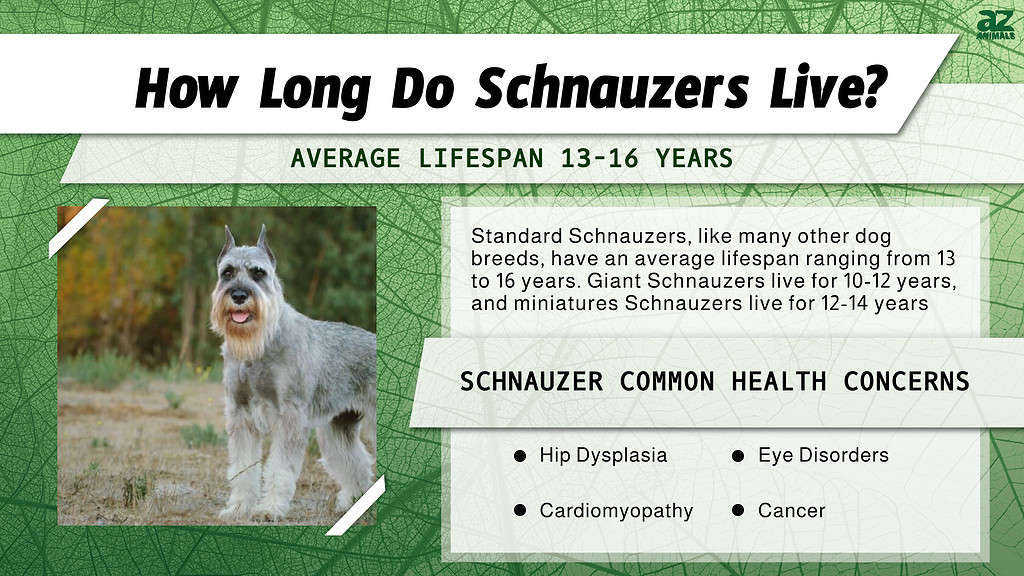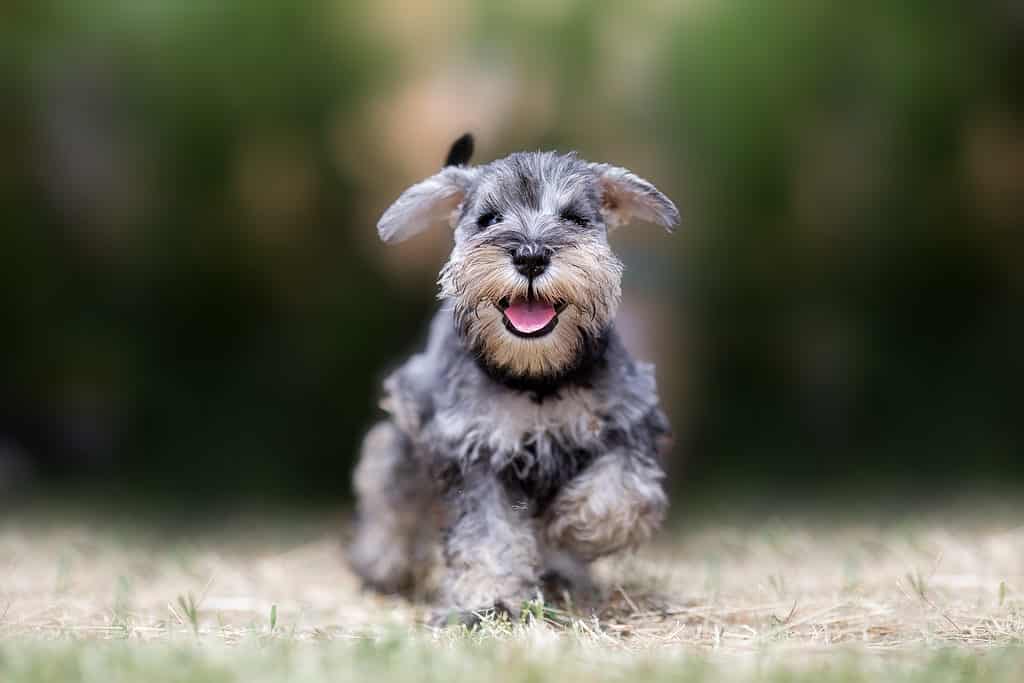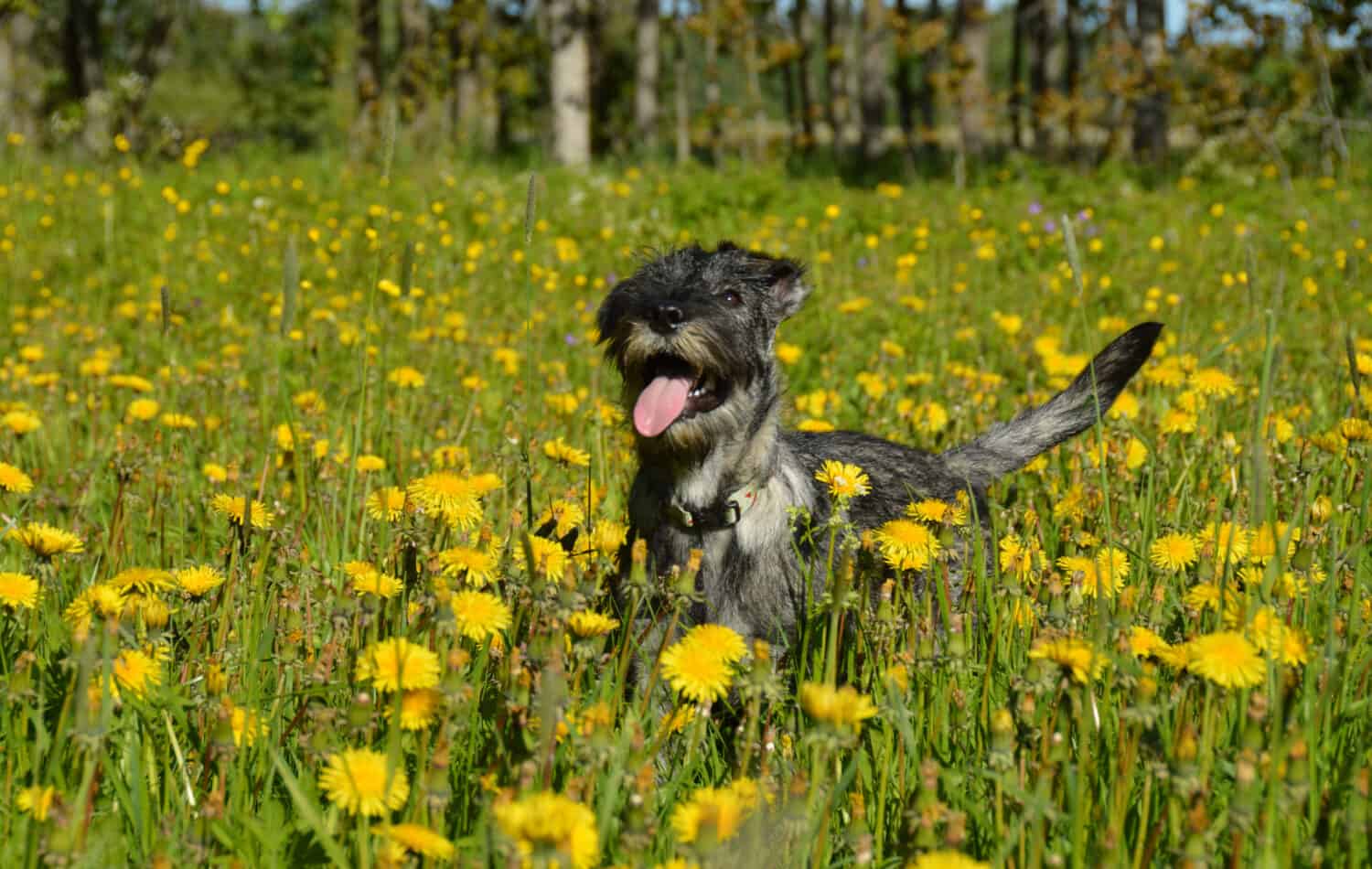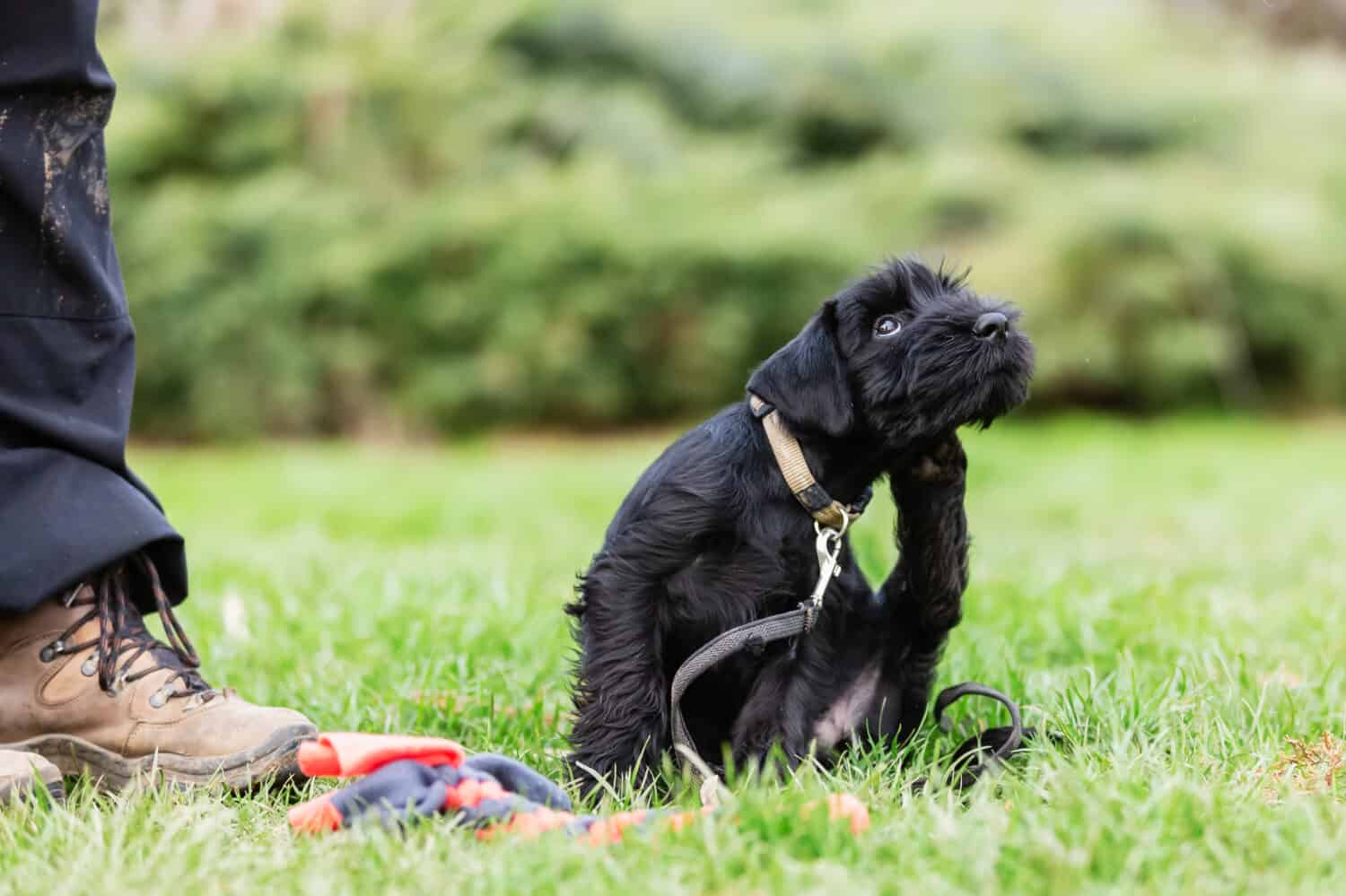With their distinctive beards and wiry coats, Schnauzers have captured the hearts of dog lovers worldwide. Known for their intelligence, loyalty, and spirited nature, these charming canines make wonderful companions for individuals and families alike. However, as we embark on our journey to better understand these delightful creatures, one question looms large. How long do Schnauzers actually live? In this comprehensive article dedicated to exploring the Schnauzer lifespan, we delve into various factors that play a role in determining their longevity. From genetics and breed-specific health concerns to lifestyle choices and proper care routines. Join us as we unravel the mysteries surrounding Schnauzer’s lifespan. Whether you’re a proud owner or considering bringing home one of these remarkable dogs soon. Read on to discover valuable insights that will help ensure your furry friend enjoys a happy and fulfilling life by your side.

About the Breed

The Standard Schnauzer has a lifespan of 13-16 years.
©everydoghasastory/Shutterstock.com
The Schnauzer, a medium-sized breed from Germany, has a wiry coat that can be black or “pepper and salt.” It generally weighs between 35 and 45 pounds. They are loyal and intelligent, making them great family pets. They are also good watchdogs and enjoy outdoor activities like chasing squirrels. With a firm but gentle hand, they are easy to train. Owners must give them the opportunity to use their active nature and sharp senses.
Schnauzer Lifespan

Schnauzers now come in several sizes, including tiny teacups.
©Lunja/Shutterstock.com
Standard Schnauzers, like many other dog breeds, have an average lifespan ranging from 13 to 16 years. Giant Schnauzers live for 10-12 years, and miniatures Schnauzers live for 12-14 years. However, various factors can significantly influence the life expectancy of these beloved companions. One crucial factor is weight management, as it plays a vital role in maintaining overall health and preventing obesity-related issues. A balanced diet tailored to meet their nutritional needs is also essential for promoting longevity.
Regular exercise is another key aspect that contributes to a Schnauzer’s lifespan. Engaging in physical activities not only helps them maintain a healthy weight but also keeps their muscles strong and joints supple. Adequate exercise can also help prevent certain age-related conditions such as arthritis and improve cardiovascular health.
Furthermore, the presence of any underlying illnesses or diseases can impact a Schnauzer’s longevity. Regular veterinary check-ups are crucial for the early detection and treatment of potential health concerns. This ensures that proper care is provided promptly.
Genetics plays an undeniable role in determining a dog’s lifespan as well. Responsible breeding practices that prioritize healthy bloodlines can help reduce the likelihood of inheriting certain genetic disorders that may decrease life expectancy.
Moreover, providing ample mental stimulation and emotional connection positively affects a Schnauzer’s quality of life and overall well-being. Creating strong bonds with their human families aids in reducing stress levels while fostering happiness and contentment.
Schnauzer Health
One crucial aspect that plays a significant role in determining the lifespan of a Schnauzer is its overall health. In this regard, the Standard Schnauzer Club of America conducts comprehensive health surveys every five years. This provides valuable insights into the breed’s well-being. These surveys consistently highlight that Schnauzers are remarkably healthy compared to other breeds. They tend to be mostly free from various common health concerns.
Breeders dedicatedly prioritize the welfare of these dogs by proactively testing for potential health issues such as hip dysplasia and eye disorders. Then they register any findings with the Orthopedic Foundation for Animals (OFA) at the esteemed University of Missouri. This commitment towards proactive testing not only showcases responsible breeding practices but also helps maintain and improve the overall health standards within the breed.
Furthermore, advancements in genetic research have led to an innovative DNA test specifically designed for identifying carriers of cardiomyopathy in Schnauzers. Cardiomyopathy is known to follow a simple recessive pattern within this breed. With this groundbreaking DNA test now available, conscientious breeders can effectively identify carriers. This allows them to make informed decisions about pairing them with non-carriers during breeding programs. By doing so, they aim to eliminate or significantly reduce the expression of this potentially debilitating disease.
Schnauzer Grooming

Proper grooming, training, and nutrition can help your Schnauzer live out its full lifespan.
©Rittis/Shutterstock.com
Proper grooming is an essential aspect of caring for Schnauzers. These intelligent and energetic dogs require regular attention to maintain their distinctive appearance and overall health. Among the various grooming tasks, owners should prioritize washing the beards and leg furnishings, ensuring dental care, keeping foreign materials from accumulating between foot pads, and trimming their nails on a weekly basis.
One distinguishing feature of Schnauzers is their double coat, which consists of a wiry outer layer and a softer undercoat. It is crucial to note that maintaining this unique coat texture requires specific techniques. Hand-stripping, the preferred method for preserving the integrity of the coat, involves manually pulling out dead hairs from the roots instead of using clippers. By hand-stripping regularly rather than opting for clipping, owners can ensure that their Schnauzer’s fur remains resistant to dirt, brambles, and water.
When the outer coat is clipped instead of hand-stripped, it not only compromises its protective qualities but also leads to increased shedding within the house. Furthermore, clipping alters both the texture and color of the coat over time by making it softer in touch while gradually lightening its original hue.
Schnauzer Exercise
Regular exercise and fitness play a crucial role in prolonging the lifespan of Schnauzers. Known for their high energy levels, these lively dogs thrive on engaging in activities that keep them physically and mentally stimulated. Schnauzers thoroughly enjoy playing with their human companions as well as interacting with other dogs, making social interaction an essential part of their exercise routine.
To ensure optimal health and happiness, it is imperative that Schnauzers are included in family activities rather than being left alone or confined to the yard. These sociable dogs crave human companionship and suffer when isolated. Going on long hikes with their owners allows them to explore the great outdoors while satisfying their adventurous spirit.
In addition to traditional forms of exercise, such as walks or jogs, many Schnauzers excel in performance sports like herding, agility, barn hunting, and lure coursing. Their intelligence, combined with their boundless enthusiasm, makes them natural competitors who eagerly participate in these challenging activities alongside their devoted owners.
The level of involvement a Schnauzer demonstrates in any given activity often depends on how much enjoyment they perceive from it themselves. If the owner genuinely relishes a particular pastime or sport, most Schnauzers will enthusiastically join in due to their desire to please those they hold dear.
Schnauzer Training

Start training your Schnauzer puppy early, and keep it positive and fun!
©Christian Mueller/Shutterstock.com
Training is an essential aspect of ensuring the well-being and longevity of your Schnauzer. Beyond mere obedience, training plays a crucial role in keeping these dogs safe and fostering a deep connection with their human companions. Starting early in puppyhood, socialization is key to instilling proper behavior and manners in Schnauzers.
One characteristic that sets Schnauzers apart is their exceptional intelligence. These furry friends possess a remarkable ability to grasp concepts and learn new exercises with minimal repetition. However, this same intelligence can present challenges during training sessions. One common issue encountered when working with Schnauzers is over-training. After just a few repetitions, they quickly lose interest and may even regard the trainer with disdainful stares as if questioning their competence.
Nevertheless, due to their sharp minds, it becomes all the more important for owners to invest time and effort into teaching them appropriate behaviors. If left untrained or without proper guidance from their humans, these resourceful canines will inevitably find ways to educate themselves. And not necessarily aligning with what their owner desires.
To ensure successful training sessions for your Schnauzer, it’s crucial to strike a balance between challenging them intellectually and avoiding excessive repetition that leads to boredom. By providing mental stimulation through varied exercises and incorporating positive reinforcement techniques such as treats or praise, you can keep your Schnauzer engaged throughout the training process. Remember that each dog has its own learning pace and preferences. Tailoring the training approach accordingly will yield optimal results.
History of the Breed
Farmers in Germany were looking for a helpful canine to assist them with their tasks, leading to the creation of the Standard Schnauzer, also known as the Mittelschnauzer. This breed is the ancestor of both the Miniature and Giant Schnauzer. Other countries also developed specialized farm dogs, such as the Kerry Blue Terrier from Ireland, Rat Terrier from the United States, and Belgium’s Tervuren.
The Schnauzer breed originated in the Middle Ages in Bavaria. People created them for various tasks such as rat catching, guarding, herding, and hunting. Although they have some similarities to certain terrier breeds from Britain, they are actually unique to Continental Europe. They became popular show dogs during the 1870s and were officially given the name Schnauzer (which means whiskered snout) by the turn of the century. They started to become popular in America during the 1920s, and in 1933 the American Kennel Club divided the breed into two separate clubs: Standard and Miniature.
The photo featured at the top of this post is © cynoclub/Shutterstock.com
Thank you for reading! Have some feedback for us? Contact the AZ Animals editorial team.






